- The J Curve
- Posts
- AI is the new supermarket
AI is the new supermarket


Efficiency just died as a competitive advantage. AI made it free. And when something becomes free, it stops being valuable.
This is the paradox founders don't see yet: the very thing you've been trained to worship—speed, automation, optimization—just became the least defensible part of your business.
We are entering a new age of industrialization. Every founder suddenly has the ability to move faster than ever before. Automate everything. Ship in days. Scale without headcount. The barriers to building have collapsed.
The problem is that everyone else got the same upgrade.
Which means you're all building the same company, at the same speed, with the same tools, optimizing for the same dashboards. You're competing on a dimension that no longer differentiates.
And to understand where this leads, you only need to look at what already happened to food.
THE SUPERMARKET PRINCIPLE
For most of human history, everything about food was inefficient.
Cheese took months to age. Tomatoes were picked the day you ate them. Bread was kneaded by hand. Wine required years of patience and local knowledge passed down through generations. Every loaf, every wheel, every bottle had variance. Quality was inconsistent, distribution was limited, and the entire system was constrained by the slowness of craft.
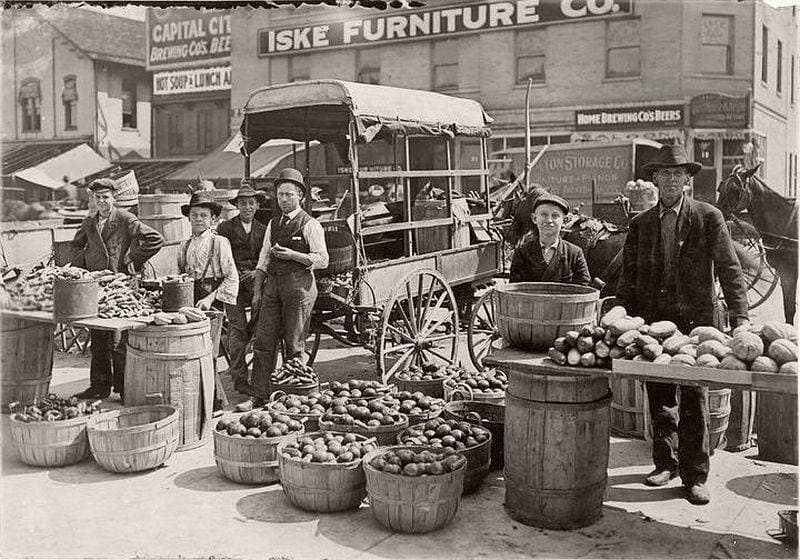
This is what shopping looked like in the early 20th century (picture found on the internet)
Then industrialization happened.
We invented preservatives that extended shelf life from days to months. We built supply chains that could predict demand a quarter out. Industrial farming replaced family farms. Supermarkets optimized shelf space to the inch. Bread that once went stale overnight suddenly stayed soft for weeks. Ingredient lists went from three elements—flour, water, yeast—to fifteen chemicals you couldn't pronounce.
For decades, this was considered progress. Food became cheaper, more abundant, more predictable. The inefficiencies were engineered out of the system, and everyone celebrated.
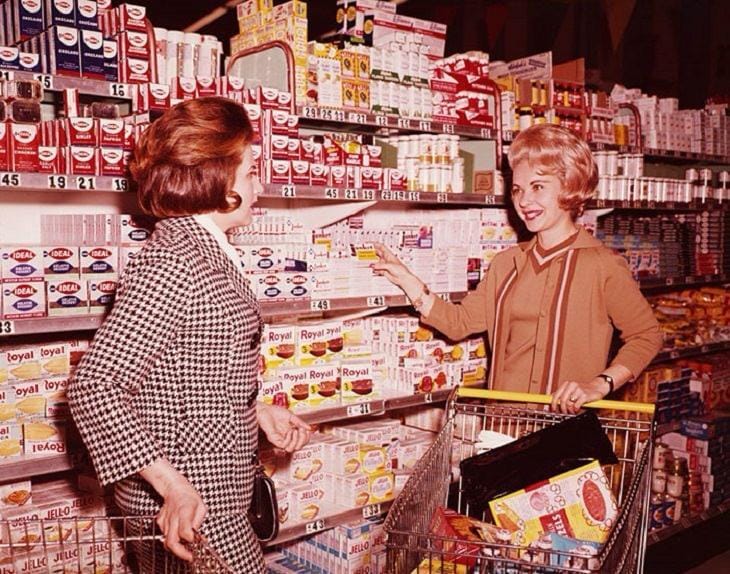
The early era of supermarketization (picture found on the internet)
But the celebration didn’t last.
People got tired of tomatoes that looked flawless but tasted like water. Strawberries bred for durability that had no smell. Bread engineered for a month of shelf life but dissolved into paste in your mouth. The health costs became impossible to ignore. Cheap, abundant, optimized food created epidemics of obesity, diabetes, metabolic disease.
The very efficiency that made food affordable also made it dangerous.
So the pendulum swung back.
Today, people pay premium prices for the exact qualities the industry spent seventy years trying to eliminate: farm-raised, organic, hand-rolled, cold-pressed, baked fresh daily, small-batch, farm-to-table. The words that sell indicate the human touch that resisted automation, the slow processes that couldn't be compressed, the natural variance that makes each product slightly different.
The supermarket won the battle for scale, but it lost the war for loyalty.
And now the same thing is happening to startups.
AI IS THE NEW SUPERMARKET
What industrialization did to food, AI is now doing to knowledge work.
It's standardizing workflows, compressing the cost of production, making everything instant and automated and optimized. You can prototype with agents, auto-generate UX, write and refactor entire codebases, spin up data pipelines, ship working apps without touching raw code.
We are entering an era of mass-produced knowledge work.
Founders are shipping faster. Teams are leaner. Cycles are shorter. The cost of building has never been lower. Every startup has access to the same AI tools, the same frameworks, the same best practices, the same growth playbooks.
But that abundance comes with a cost.
The market is flooding with identical products, sitting on identical shelves, produced by identical processes. Efficiency stops being a competitive advantage. It becomes the baseline. The supermarket shelf.
Which means the true winners in the AI economy will be the companies that understand which parts of their business must stay deliberately, strategically, grossly inefficient.
The artisanal ones.
WHAT REMAINS SCARCE
So what's valuable when everything else is abundant?
Start with the most underrated: deep customer intimacy.
AI is making everything faster. But speed removes human presence from the parts of the business where presence matters most.
You can feel this immediately as a customer. When someone spends twenty minutes trapped in an AI phone tree at your competitor—pressing buttons, repeating themselves to a chatbot that can't hold context, getting transferred three times—and then they call you and a real human picks up on the second ring, knows their name, remembers their last issue, and solves the problem with actual empathy in under three minutes...
You've just created a moat.
That customer isn't leaving. Not for a 10% discount. Not for a slightly better feature. Because you've given them something that's becoming vanishingly rare: the experience of being treated like a human by another human.
Here's the irony: every founder knows they should talk to customers. But the AI-native instinct is to automate this away too. Send surveys. Use analytics. Deploy chatbots. Compress the feedback loop. Make it efficient.
The founders building enduring companies are doing the opposite. They're spending hours on the phone with individual users. They're flying across the country to sit in a customer's office. They're watching clients work, observing real behavior, hearing unspoken frustrations. They're embedding themselves in the communities they serve—learning the language, understanding incentives, absorbing the culture.
When your competitor is optimizing their "customer research process" with AI—and you're spending forty hours a week actually sitting with customers—you're building proprietary insight they can never catch. They're getting synthetic understanding. You're getting ground truth.
But intimacy alone isn't enough. It needs to connect to something deeper.
Which brings us to taste.
THE CURATOR’S EYE
In 1980, a twenty-year-old named Jean-Michel Basquiat was painting on salvaged doors in his East Village apartment. His work was raw, chaotic, deliberately primitive—the kind of thing most people would walk past without looking twice.
But a handful of gallery owners saw something in it. They couldn't point to market data. There were no comparable sales. They were operating on an internal compass—calibrated through years of looking at thousands of forgettable pieces—that told them this was different.
By the time everyone else could see what they saw, Basquiat's work was in museums and the window had closed.
That's taste. Not aesthetic preference. Not design sensibility. Taste is the ability to see the full form before it's finished and before the market validates it.
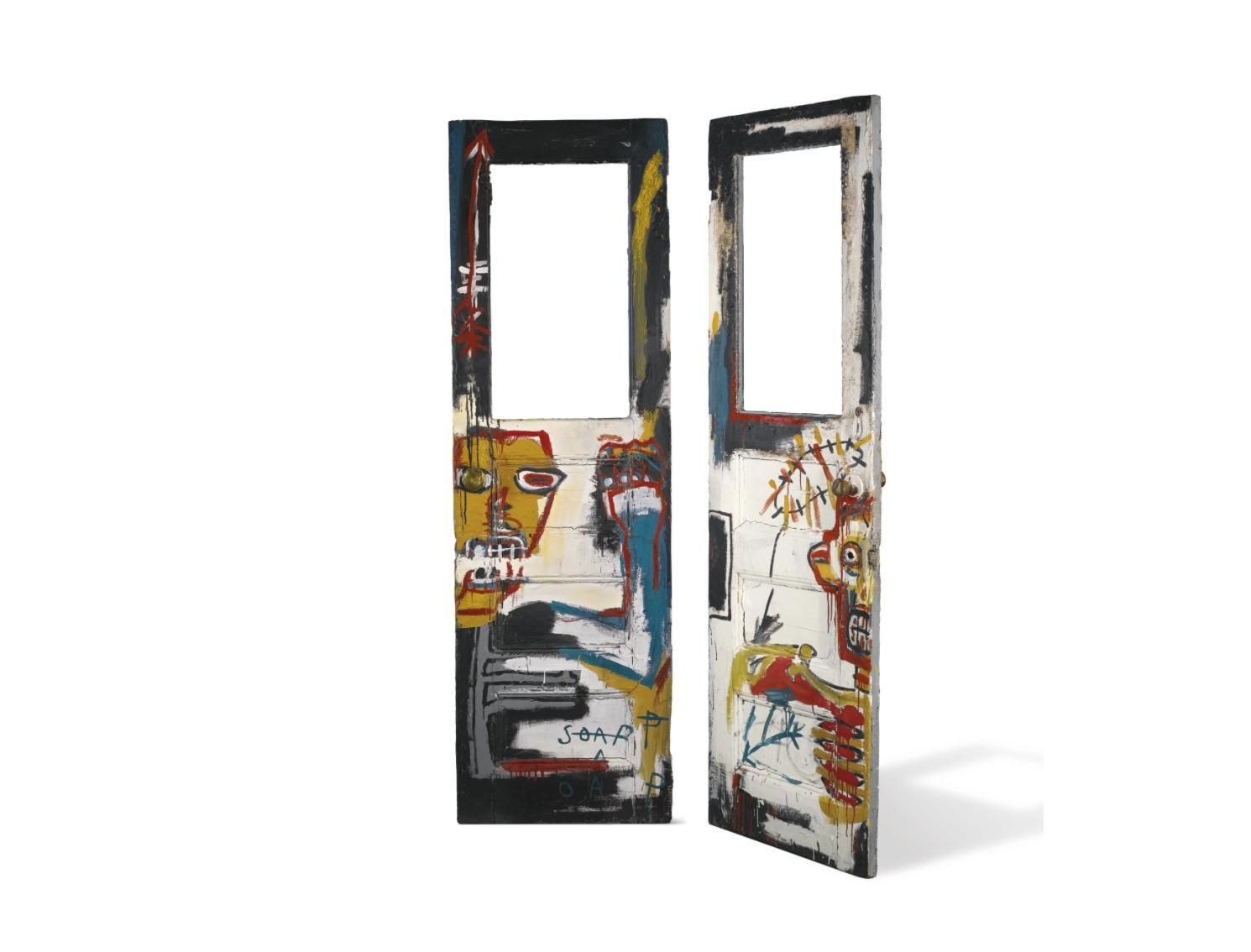
Image courtesy of Sotheby’s. Early Basquiat artwork painted on salvaged wooden doors.
AI can generate decent work. Competent marketing copy. Acceptable design. Functional code. But it cannot develop taste. It can only reproduce the patterns it's seen before—which means it's always looking backward, always converging on the mean.
And as the market floods with AI-generated mediocrity—competent but forgettable products, acceptable but undifferentiated brands, functional but soulless experiences—the companies with genuine aesthetic point of view become disproportionately valuable.
Nubank didn't just build a better bank. They built a bank that looked and felt like something you'd actually want to use. Purple cards. Clean interfaces. Language that treated customers like adults. Every detail reflected a coherent vision of what financial services could be.
Their competitors had better rates, more features, bigger marketing budgets. But Nubank had taste. And in a sea of interchangeable options, taste became the deciding factor.
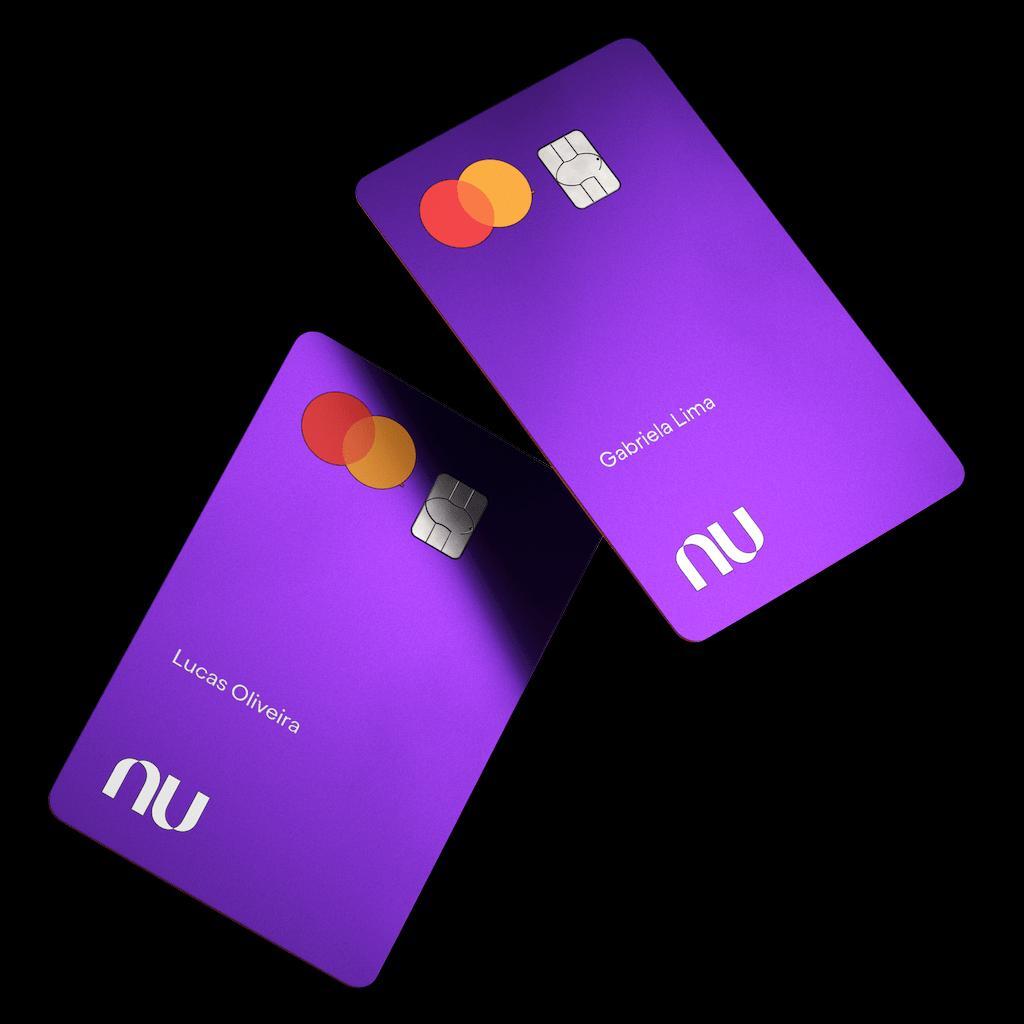
The card that made millions rethink what a bank could feel like. Picture courtesy of Nubank.
This applies to product design, brand voice, strategic positioning, hiring decisions, capital allocation. The question isn't "what should we build?" It's "what would the best version of this look like?"
But here's the thing about taste: you can't rush it. You can't automate it. And you definitely can't optimize for it on a dashboard.
Which is why the final scarce asset might be the most important.
BUILDING ON BEDROCK
The most dangerous thing AI enables is the ability to be wrong faster.
You can now build the wrong product, for the wrong customer, in the wrong market, at unprecedented speed. You can scale a mistake before you even realize it's a mistake.
Founders are racing to build on the newest capabilities—launching products around features that didn't exist six months ago, pivoting to whatever the latest model can do, competing on who can integrate fastest.
VCs are doing the same thing. Raising funds to back “everything dot ai” pitching LPs on proprietary access to cutting-edge applications, trying to catch the wave before it crests.
But here's what everyone forgets: the technical moat always dissolves.
The AI capability that seems magical today will be a commodity API in eighteen months. The model that costs thousands to run will cost pennies. The feature that takes your team three months to build will be a one-line integration.
So if you're building on shifting ground—on whatever AI just made possible this quarter—you're building on sand.
The founders who survive aren't asking "what just became possible?" They're asking "what will still be true in ten years?"
What human needs remain constant even as tools evolve? What constraints won't disappear? What behaviors are so embedded they'll persist regardless of technology?
Airbnb's insight wasn't about booking technology—it was about the human desire to feel at home in unfamiliar places. Stripe's insight wasn't about payment APIs—it was that developers would always hate dealing with financial infrastructure. Those truths were true before AI. They'll be true after.
This is the difference between building on bedrock and building on hype.
And in a market moving at AI speed, the ability to slow down and think—to have the patience to identify what won't change—becomes a structural advantage.
The companies that thrive in 2035 won't be the ones that moved fastest in 2025. They'll be the ones that understood what wouldn't change, and had the discipline to build around that while everyone else was chasing velocity.
THE PENDULUM ALWAYS SWINGS
AI is just the next aisle in the same supermarket. It will flood the shelves with infinite efficiency. Everyone will have access to the same ingredients, the same tools, the same speed.
And that's exactly what makes this moment the opportunity.
Because when everything becomes automated, the things that resist automation become exponentially more valuable:
Physical communities and in-person experiences. When every digital interaction feels synthetic, the rooms you curate—the events you host, the relationships you nurture, the trust built face-to-face—become cultural gravity. You can't prompt-engineer belonging.
Brand. Not logos or design systems. Brand as the thing people feel when they think about you. The reason someone chooses your product even when a competitor's is cheaper and technically better. The emotional territory you own that can't be replicated by better tools.
Proprietary IP. Original research. Long-form thinking. Media that LLMs will need to license because they can't generate it themselves. The more unique your thinking, your archives, your community-generated content, the more powerful your leverage when the licensing economy becomes real.
These are the new artisanal goods—the things that don't scale elegantly, don't compress into APIs, don't survive the factory line.
In 1970, if you told someone that people would eventually pay $8 for a loaf of bread, they would have thought you were insane. Bread was the thing we'd finally made cheap and abundant. Why would anyone pay premium prices for inefficiency?
But today, walking into a bakery and watching someone pull fresh sourdough from a stone oven isn't inefficiency. It's the entire value proposition.

A slow-fermented sourdough loaf (picture found on the internet)
The supermarket is still there. It still serves a purpose. But the loyalty—the premium, the margins, the customers who won't leave—migrated to the places that kept the craft.
The same migration is happening now in tech.
AI will make efficiency free. And when that happens, the companies that win won't be the most efficient ones.
They'll be the ones that knew which parts of the business to keep beautifully, deliberately, strategically human.
Thanks for reading,
Olga
Speaking of physical communities—I've partnered with AWS to host an IRL conversation in in São Paulo on November 25th with Jeeves CEO Dileep Thazhmon and Warburg Pincus Co-Head of Brazil Bruno Maimone on what it actually takes to build, scale, and fund global-caliber companies from Brazil.
Apply to attend here.
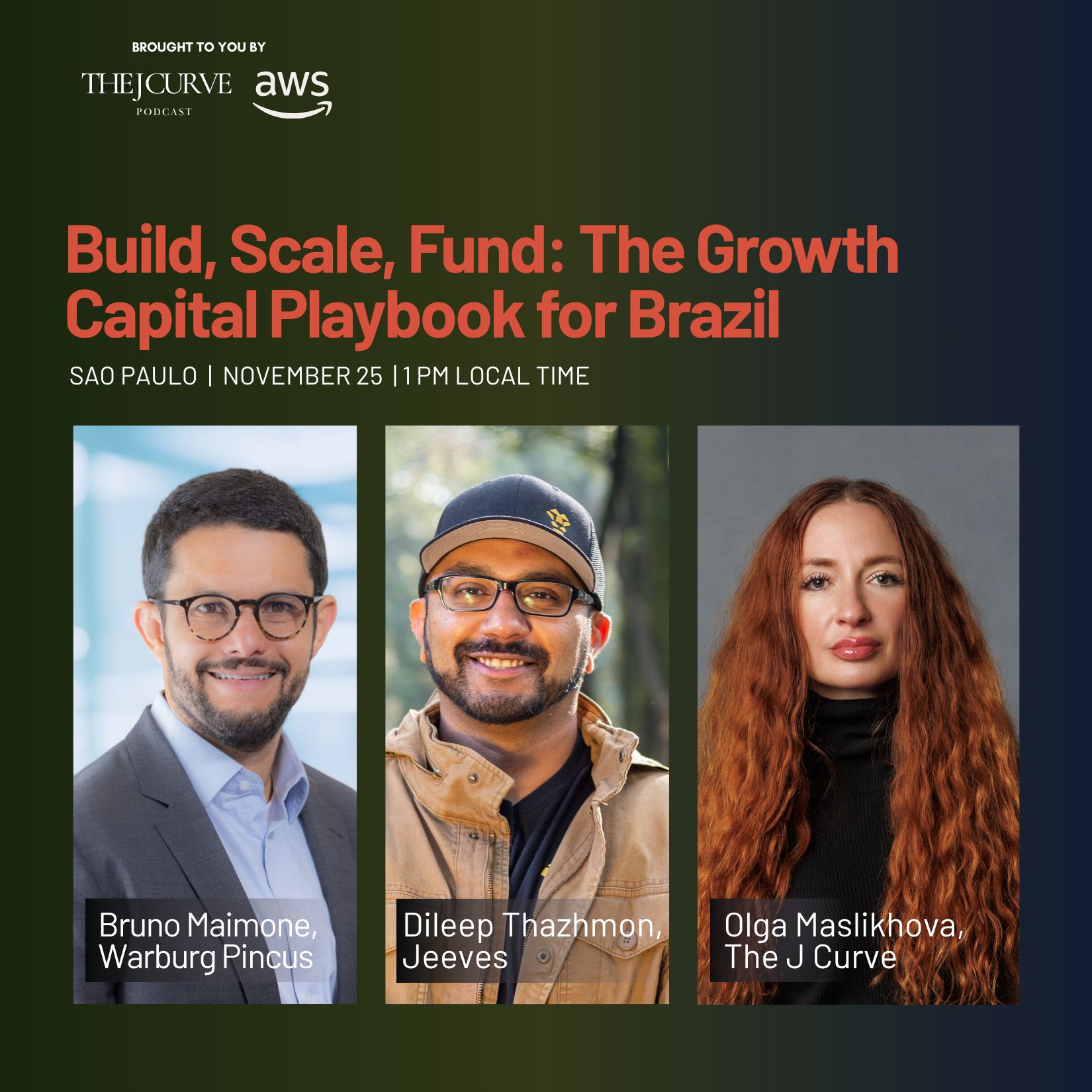

P.S. If this issue was valuable to you please share it with a founder who needs to hear it. Let’s build LATAM’s next tech leaders—together
🎙 The J Curve is where LATAM's boldest founders & investors come to talk real strategy, opportunity and leadership.